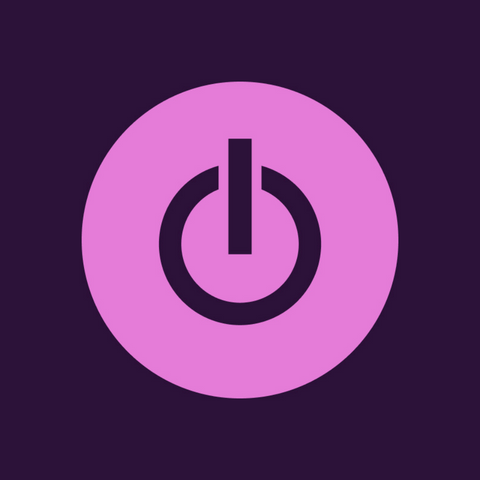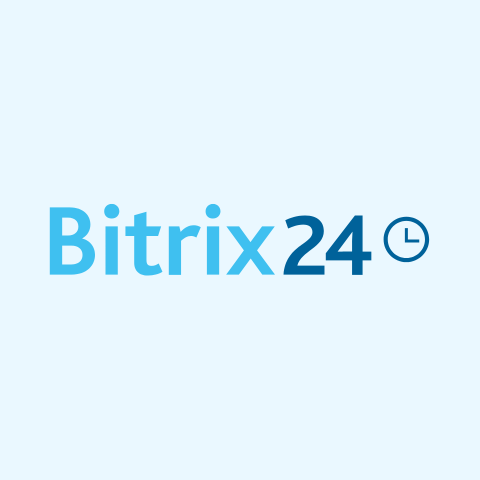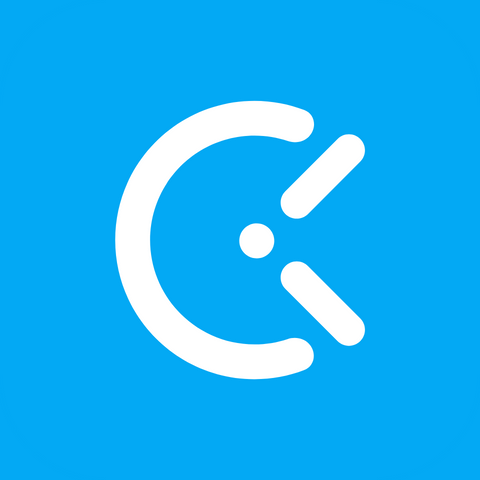Time billing software is a business management tool that allows users to track time spent on tasks, generate invoices, and automate billing processes, which can improve productivity and resource management for businesses and professionals.
Time billing software includes features like expense tracking, project management, and reporting capabilities to help businesses save time on tracking team hours and billing manually. It is commonly used by lawyers, consultants, accountants, freelancers, and other service-based industries to accurately invoice clients for their time and services rendered.
Geekflare has researched and compiled the best time billing software to help businesses choose the right solution based on key features such as business size, industry-specific needs, and budget.
- Toggl – Best for Small to Medium Businesses
- Bitrix24 – Best for Work Management
- Clockify – Best for Unlimited Users with Free Plan
- Zoho Invoice – Best for Zoho Suite Integration
- Canopy – Best for Accounting Firms
- Scoro – Best for Consultants
- MyHours – Best for Freelancers
- Bill4time – Best for Legal Professionals
- Nutcache – Best for Project-Centric Time Tracking
- Beebole – Best for Remote Teams
- Replicon – Best for Large Businesses
- BigTime – Best for Professional Services
- Harvest – Best for User-Friendly Time Tracking and Timesheet
- TimeCamp – Best for Automatic Time Tracking
- Show less
You can trust Geekflare
Imagine the satisfaction of finding just what you needed. We understand that feeling, too, so we go to great lengths to evaluate freemium, subscribe to the premium plan if required, have a cup of coffee, and test the products to provide unbiased reviews! While we may earn affiliate commissions, our primary focus remains steadfast: delivering unbiased editorial insights, and in-depth reviews. See how we test.

Toggl
Best for Small to Medium Businesses
- Invoice CustomizationBasic
- Platform AvailabilityWeb, Desktop, Mobile
- User InterfaceSleek
About Toggl
Toggl Track is a decade-old time tracking and billing software ideal for small to medium businesses. It offers a great user experience for tracking work hours, managing projects, and billing clients.
Toggl Track offers various options, including a mobile app, desktop app, web version, browser plugin, and hundreds of integrations. While using Chrome, Firefox, or even the Edge browser’s extension, you can start its timer directly from other tools like Asana, Todoist, Xero, and more. These extensions also come with a Pomodoro Timer, idle detection, and tracking reminders.
Although Toggle Track only lets you download an invoice as a PDF, it integrates with QuickBooks Online, through which you can directly share your invoices.
Toggle Track comes with a free plan for up to five users and goes up to $18 per user/month with its premium plan.
Toggl Features
Live time-tracking using timers, manual entries, or integrations with calendar tools.
Tailor the interface, reports, and tracking methods to fit specific workflow needs.
Detailed and customizable reports to analyze project and client profitability.
Integrates with over 100 apps, including QuickBooks, Asana, Trello, and Jira.
Extensive features like project templates, billable rates, and time estimates to manage and forecast project performance.
Toggl Pros/Cons
User-friendly interface with intuitive design.
Versatile time tracking options (real-time, manual, calendar integration).
Comprehensive reporting and analytics.
Free plan available for small teams and individuals.
Limited features on the free plan.
Costs can add up with larger teams due to per-user pricing.

Bitrix24
Best for Work Management
- Invoice CustomizationBasic
- Platform AvailabilityDesktop, Mobile, Web
- User InterfaceIntuitive
About Bitrix24
Bitrix24 is a top-tier time AI-powered billing software that helps businesses improve their work management processes. It provides tools for managing tasks, improving work planning, and tracking employee performance.
Using Bitrix24, teams can see instant productivity improvements. Managers can learn about time spent on tasks, as well as supervisor ratings and deadlines, giving them data-backed information to provide necessary feedback.
The platform allows team members to generate reports, ranging from task scoring to work reports, and send them to supervisors. Furthermore, managers and team members can create custom reports (such as cross-departmental reports) or automate reports (like attendance reports) at specific intervals.
Overall, the Bitrix24 approach allows for detailed work estimates, giving managers better control over the project. It also allows business analysts to provide better pricing estimates to clients. The platform integrates AI, allowing users to summarize tasks and understand reports better.
Bitrix24 provides a Free Plan with unlimited users and 5 GB online storage. Paid plans start with the Basic plan, priced at $49/organization/month, when billed annually. It allows up to 5 users and provides 24 GB of online storage. The Enterprise plan is the most expensive subscription, costing $399/organization/month (with annual billing), and includes up to 250 users and 3 TB of online storage space. It also provides all major collaboration and storage features, including third-party integrations.
Bitrix24 Features
Offers complete workload management with task time tracking, work time management, work schedules, and work prioritization.
Supports business process automation, such as Robotic Process Automation (RPA) and SPA.
Enables managers to keep track of employee productivity with KPIs.
Supports multiple integrations, such as MailChimp, Zoom, PayPal, etc., via the Bitrix24 Market.
Bitrix24 app available across iOS, Android, and Windows devices, with support for notifications.
Bitrix24 Pros/Cons
Offers a free plan with unlimited users and 5 GB storage space
Facilitates on-the-go work management with mobile apps
Excellent work reports and automation
Top-notch integration options
Free plan has limited features
Has a slight learning curve

Clockify
Best for Unlimited Users with Free Plan
- Invoice CustomizationLimited
- Platform AvailabilityWeb, Desktop, Mobile
- User InterfaceIntuitive
About Clockify
Clockify is a time tracking & billing software launched in 2016 by Cake Inc. that can track work hours, manage projects, and bill clients accurately. It is ideal for freelancers, small businesses, and even enterprises for its all-around features and free plan.
Clockify provides precise time tracking, detailed reporting, and project management services. With a clean interface available on web, desktop, and mobile applications, you can easily log hours, generate invoices, and monitor team productivity.
Clockify offers a free plan that comes with unlimited time tracking, team activity, reports, and many other features. Paid plans start at $3.99 per user/month, offering features such as bulk editing and time audits. The enterprise plan, priced at $11.99 per user/month, includes advanced features like single sign-on and audit logs for security purposes.
Clockify Features
Track time using a timer, timesheet, or auto tracker.
Integrates with 80+ apps including QuickBooks, Trello, Asana, and Jira.
Available on Windows, Mac, Linux, Android, and iOS
Create custom invoices, import billable hours, and export invoices in various formats.
Invite unlimited users, set hourly rates, assign manager roles, and group team members.
Manage projects with features like budgeting, time estimates, and forecasting to predict project performance and track progress.
Clockify Pros/Cons
Offers precise time tracking with idle detection and reminders.
Customizable interface, reports, and tracking methods.
Export reports in PDF, CSV, and Excel.
Supports offline time tracking.
Lacks built-in payroll functionality.
Free plan doesn’t offer expense tracking, invoicing, or project templates.

Zoho Invoice
Best for Zoho Suite Integration
- Invoice CustomizationModerate
- Platform AvailabilityWeb, Desktop, Mobile
- User InterfaceUser-friendly
About Zoho Invoice
Zoho Invoice is a cloud-based invoicing software that manages professional invoices, tracks expenses, and records billable hours. Developed by Zoho Corporation, it integrates with different apps, including Stripe, Paypal, Google Workspace, Slack, and many more. You can share your invoices via email, SMS, or through a customer portal on Zoho, which ensures timely payment to the team and smooth cash flow management.
Zoho Invoice also offers customizable invoice templates, automated recurring invoices, and multiple payment gateways. Although Zoho has a huge toolkit, its invoicing feature is completely free to use, and you can even integrate it with other Zoho products like Zoho Books and Zoho CRM.
Zoho Invoice Features
View unbilled hours and expenses in real-time on the dashboard.
Provide customized and restricted access to staff for logging hours.
Automatically add unbilled hours and billable expenses to an invoice with a single click.
Access Zoho Invoice on iOS, Android, and Windows for mobile invoicing and time tracking.
Track project-based time by creating projects, assigning tasks, and inviting team members.
All-in-one platform with Invoice, Payments, Quotes, Time Tracking, Customer Portal, Expenses, and Invoice Templates.
Zoho Invoice Pros/Cons
Supports multiple currencies and languages.
Offers a variety of templates for professional-looking invoices.
Run real-time reports on your company’s sales, daily expenses, and even tax summaries.
Only allows 1,000 invoices per year
Occasional glitches on the login page

Canopy
Best for Accounting Firms
- Invoice CustomizationHigh
- Platform AvailabilityWeb, Mobile
- User InterfaceInteractive
About Canopy
Canopy is an accounting practice management software that includes comprehensive time billing software specifically for accounting firms. Launched in 2014 and headquartered in Lehi, Utah, Canopy has quickly become a trusted name in the accounting industry.
The Canopy time and billing module is a part of the practice management platform that includes various features like document management, CRM, and client portal. It helps with tracking billable hours, managing invoicing, and streamlining the billing process. It integrates with QuickBooks to eliminate manual data entry and ensure financial data consistency across platforms.
Although its primary accounting management features have a different pricing structure, you can subscribe to its time and billing systems for $25/user/month.
Canopy Features
Built-in timers, manual time entry, and comprehensive time reports.
Customizable invoices, recurring billing, and integration with QuickBooks Online.
Automated invoice reminders, late fees, and secure client portal access for payment processing.
Detailed reports on time utilization, revenue, profitability, and capacity planning.
Provides a secure, branded portal for client management to access documents, make payments, and communicate with their accountants
Canopy Pros/Cons
Profitability report based on each client record
Precise time tracking
Offers customizable invoices
User-friendly interface and easy to use
Expensive plans
No payroll management

Scoro
Best for Consultants
- Invoice CustomizationHigh
- Platform AvailabilityWeb, Mobile
- User InterfaceEngaging
About Scoro
Scoro is built for agencies, professional service businesses, and consultancies to increase profitability, gain more traffic, and standardize operations. It comes with time tracking and billing software tailored especially for consultants, which combines project management, invoicing, and time tracking in one platform.
With Scoro, you can easily automate recurring invoices, convert quotes into invoices, and manage retainer agreements effortlessly. It supports multiple currencies, and its powerful reporting features provide insights into profitability, expenses, and project progress. It integrates efficiently with popular accounting features like QuickBooks, Xero, Stripe, etc., ensuring smooth financial operations.
Although the pricing plans start at $26/month for a single user, if you need its time tracker, you’ll have to go for its Standard plan, which costs $37/month for a user.
Scoro Features
Generate customizable PDF invoices, including work report data.
Automate billing with recurring invoices and payment reminders.
Convert quotes into invoices for accurate billing.
Forecast billing and cash flow with predictive tools.
Sync financial data with accounting software like QuickBooks and Xero.
Scoro Pros/Cons
Dashboards are highly customizable
Supports multiple currencies for global consulting firms.
Tools for task scheduling, milestone tracking, and resource allocation
Pricing can be high for smaller teams.
Can be slow at times.

MyHours
Best for Freelancers
- Invoice CustomizationLimited
- Platform AvailabilityWeb, Mobile
- User InterfaceAI-Powered
About MyHours
MyHours, a versatile time-tracking and billing software, was launched in 2002 by Spica, a company based in Ljubljana. It is designed to help freelancers efficiently manage their work hours, projects, and invoicing.
MyHours offers precise time tracking, customizable invoicing, and comprehensive reporting. To enhance its functionality, you have the option to integrate MyHours with popular tools such as QuickBooks and Zapier.
MyHours comes with a free plan where you can have up to five users and manage unlimited projects and clients, do time-tracking, set billable rates, and even generate detailed reports.
To access advanced features such as creating professional invoices and customizing them with your logo, you will need to upgrade to the MyHours Pro Plan, which starts at $8 per user/month.
MyHours Features
Categorize entries based on projects, clients, or tasks.
Create professional, numbered invoices directly from logged hours with customizable templates.
Log and categorize expenses related to projects.
Generate detailed reports with data visualization.
Connect with other business tools via Zapier.
MyHours Pros/Cons
Free plan available for teams of up to 5 users.
Flexible billing options, including hourly, daily, weekly, and monthly rates.
Cross-platform accessibility.
Robust security and GDPR compliance.
Lacks built-in payroll functionality.
Limited advanced features in the paid plan.

Bill4time
Best for Legal Professionals
- Invoice CustomizationHigh
- Platform AvailabilityWeb, Mobile
- User InterfaceModern
About Bill4time
Bill4Time, launched in 2006, is a time-tracking and legal billing software tailored for legal professionals. It provides a comprehensive solution with features such as online invoicing, payment management, recurring billing, and document management.
Bill4Time offers legal-specific features such as trust accounting, UTBMS codes, and LEDES exporting.
Bill4time provides a variety of pricing plans, with the starting price at $27 per user per month. The Legal Enterprise plan is available for $80 per user per month and offers features like custom LEDES Export and customizable data fields.
Bill4time Features
Capture every billable minute with one-click timers and easy time entry.
Generate professional, detailed invoices with customizable templates and utilize features like write-up/write-down, recurring flat fees, and custom rates.
Manage trust and IOLTA accounts with built-in reconciliation tools.
Secure client portals and online payment plans that help firms get paid faster.
Sync with existing tools like QuickBooks for accounting and Box.com for document storage.
Comprehensive reporting tools that allow detailed tracking of billable hours, expenses, and overall business performance.
Bill4time Pros/Cons
Tailored for legal professionals with specialized features like trust accounting and conflict checking.
Accurate time tracking with mobile and desktop accessibility.
Highly secure with 256-bit encryption and local data backup.
Easy invoicing with customizable templates and automated billing options.
Expensive for small businesses
Steep learning curve

Nutcache
Best for Project-Centric Time Tracking
- Invoice CustomizationHigh
- Platform AvailabilityWeb, Desktop, Mobile
- User InterfaceUser Friendly
About Nutcache
Nutcache is a time-tracking and project management tool launched in 2013 and is currently owned by Dynacom Technologies. It is particularly useful for project-centric businesses like consulting firms, marketing agencies, and design studios as it offers features such as multiple web timers, team calendar views, and task linking.
Nutcache plans start at $12.49/user/month, offering features like advanced reporting, task automation, and real-time project budgeting.
Nutcache Features
Create and manage unlimited projects, set milestones, and track progress using customizable boards.
Set and monitor project budgets to prevent cost overruns.
Assign tasks, track progress, and collaborate with team members effectively.
Visualize who is working on what tasks and for how long with a Calendar View.
Project management features, including task assignment, milestone tracking, and Gantt charts.
Nutcache Pros/Cons
Competitive pricing structure
Intuitive and user-friendly interface
Highly adaptable boards for Agile, Scrum, and Kanban.
Integrates with tons of apps, including QuickBooks, Slack, and Trello, to streamline workflows
Certain notifications may not appear in the calendar, leading to potential missed deadlines.
Limited customization

Beebole
Best for Remote Teams
- Invoice CustomizationModerate
- Platform AvailabilityWeb
- User InterfaceIntuitive
About Beebole
Beebole is an all-in-one time tracking solution that was founded remotely in 2008 by Yves Hiernaux and Mic Cvilic. It offers detailed time tracking, detailed reporting, and various project management tools. You can log hours using an easy-to-use timer or manually input them, ensuring accurate tracking of billable and non-billable hours.
Beebole integrates with Google Sheets and Microsoft Excel and offers secure cloud technology, which ensures data safety and compliance with GDPR standards. You can further access it via web, mobile, and desktop applications, which makes it versatile for remote teams.
In terms of pricing, Beebole does not have a free version. However, it does offer a 30-day free trial without needing a credit card. It also has a paid plan, which starts at € 6.99 per user/month and offers unlimited clients, projects, and tasks, automated reminders, a tap timer, and many more features.
Beebole Features
Generate customizable reports on employee time, project costs, and profitability.
Reports can be exported to CSV, PDF, or directly to Google Drive.
Seamlessly integrate with Google Workspace, Google Sheets, and Microsoft Excel.
Manage multiple projects with features like budgeting, time estimates, and forecasting.
256-bit encryption, daily backups, secure server locations, and compliance with GDPR and DCAA standards.
Handle PTO and absence requests effortlessly.
Beebole Pros/Cons
Highly customizable reports
Multiple options for tracking time
Highly responsive customer care
Available in 11 languages
Does not offer built-in invoicing tools
Occasional bugs in the system

Replicon
Best for Large Businesses
- Invoice CustomizationHigh
- Platform AvailabilityWeb, Mobile
- User InterfaceAI-Powered
About Replicon
Replicon is a time tracking, time attendance, and professional services automation tool. It was founded in 1996 in Calgary, Canada, and is currently owned by Deltek, a global provider of software and solutions for project-based businesses.
Replicon offers configurable timesheets, advanced multi-currency invoicing, and mobile accessibility with GPS tracking. It integrates efficiently with your existing business applications, including project management, HR, payroll, accounting, ERP systems & more.
Replicon supports global compliance and provides extensive resource management capabilities. Its real-time analytics deliver detailed insights through reports and dashboards, while expense management tools ensure accurate billing.
Replicon offers different paid plans starting at $6 per month for “Time & Attendance” and $12 per month for “Project Time Tracking,” which includes expense tracking and invoicing features.
Replicon Features
AI-powered time tracking.
Configurable timesheets that are fully customizable to fit specific workflows.
Multi-currency support and configurable invoice templates.
GPS-enabled mobile tracking for on-the-go time management.
Connects with CRM, ERP, payroll, and other systems.
Track and manage project-related expenses efficiently.
Replicon Pros/Cons
Real-time data access and reporting
Excellent customer support.
100+ third-party integrations.
Attach documents and links directly like Google Docs, Dropbox or MS Sharepoint.
Expensive for small businesses
Overwhelming for beginners

BigTime
Best for Professional Services
- Invoice CustomizationHigh
- Platform AvailabilityWeb
- User InterfaceFeature-Rich
About BigTime
BigTime Software is a private equity-funded company which was established in 2002. It currently has more than 80,000 active users and is widely adopted by accountants, engineers, architects, IT services firms, and management consultants.
BigTime time tracking tool includes multiple pausable timers, customizable daily and weekly timesheet views, user-defined workweeks, and columns with required fields. You can further integrate it with popular tools like Salesforce, Slack, and Jira.
BigTime supports multiple currencies and includes a client billing portal, custom reporting, and advanced budgeting capabilities. Its paid plans start at $20 per user/month which offers time tracking, expense management, and project management. There is also a “Premier” plan that costs $45 per user/month and offers more advanced features like project budgeting, multi-level approvals, and simple resource planning.
BigTime Features
Auto-Fill and Auto-Save using smart lookups with user-specific presets.
Managerial Permissions for reviewing and approving entries.
Access Control to limit sensitive information to reduce errors.
Set up timesheets in daily or weekly views with user-defined workweeks.
Customizable Columns supporting FAR & DCAA compliance.
BigTime Pros/Cons
Reconcile bank statements using QuickBooks.
Flexible submission times with optional lockout periods for approvals.
Mark expenses as reimbursable, non-reimbursable, billable, non-billable, or service fees.
Initial setup is a bit tricky.
Limited options for customizing invoices.

Harvest
Best for User-Friendly Time Tracking and Timesheet
- Invoice CustomizationModerate
- Platform AvailabilityWeb, Desktop, Mobile
- User InterfaceClean & Simple
About Harvest
Harvest, launched in 2006, is a trusted tool used by over 70,000 companies globally for time tracking, project management, and generating invoices.
Harvest is available on desktop, web, and mobile platforms. You can easily start and stop timers, log hours, and capture expenses on the go. It integrates efficiently with popular tools like Asana, Slack, and Trello. Primarily, its time-tracking features help teams monitor productivity, manage budgets, and generate detailed reports for better project insights.
Harvest comes with a free version where you get a single-seat capacity and two projects. There is also a Pro version priced at $10.80 per seat/month, which offers unlimited seats and unlimited projects.
Harvest Features
Intuitive and lightweight timesheet solution.
Integrates with tools like Asana, Slack, Trello, and Jira.
Build time-tracking habits with reminders and notifications.
Connect your calendar for easy time entry.
Capture and manage project expenses, including receipts.
Harvest Pros/Cons
Multi-currency support
Generate invoices from tracked time and expenses.
Accept client payments via Stripe and PayPal.
Easy to use, even for non-tech-savvy users.
Free version only supports time tracking for two projects.
Limited features

TimeCamp
Best for Automatic Time Tracking
- Invoice CustomizationModerate
- Platform AvailabilityWeb, Desktop, Mobile
- User InterfaceUser Friendly
About TimeCamp
TimeCamp was launched in 2009 as a time tracking and billing software for freelancers, small businesses, and large enterprises.
TimeCamp offers more than just time tracking, with features such as budgets and estimates for tasks, custom reports, and the ability to share them easily. This helps project managers and clients monitor costs and project profitability.
TimeCamp also offers enhanced security features, including two-factor authentication, Single Sign-On (SSO), audit logs, and the option to deploy on a self-hosted or private cloud instance for enterprises.
It comes with a free plan, offering timesheets, unlimited users, a time clock kiosk, and geofencing. TimeCamp offers multiple paid plans starting at $2.99 per user/month and going up to $11.99 per user/month for advanced features such as timesheet approvals, labor cost tracking, and creating fixed-fee projects.
TimeCamp Features
Automatic time and productivity tracking.
Supports task and subtask creation.
Create, manage, and budget projects with comprehensive insights.
Customizable invoices directly from tracked time, supporting various billing rates and including non-billable hours for comprehensive financial management.
Integrates with over-popular tools such as Trello, Asana, Monday, and Slack.
TimeCamp Pros/Cons
Detailed and customizable reports
User-friendly interface
Customizable invoices
Various tools for budgeting, task management, and progress tracking
Limited offline features
Occasional glitches
Time Billing Software Comparison
Time Billing Software | Monthly Price/User | Payment Integration | Reporting | Rating Geekflare’s ratings are determined by our editorial team, considering various factors to help you choose the right business software for your needs. | Explore |
|---|---|---|---|---|---|
 Clockify | $3.99 | No | Detailed Time Reports | ||
 Zoho Invoice | Free | Credit Card, ACH, Checks, Cash | 30+ Real-Time Business Reports | ||
 Canopy | $25 | Credit Card, ACH, Stripe | Interactive Analytics Dashboard | ||
 Scoro | $26 | PayPal, Stripe | Real-Time Dashboards | ||
 MyHours | $8 | PayPal, Stripe | Time Reports, Project Analytics | ||
 Bill4time | $27 | Credit Card, ACH, eChecks, Cash | Comprehensive Reporting | ||
 Toggl | $9 | Credit/Debit Cards, PayPal | Visual Time Tracking Reports | ||
 Nutcache | $12.49 | PayPal, Stripe, Authorized.Net | In-Depth Financial Reports | ||
 Beebole | €6.99 | Credit Card, PayPal, ACH | Custom Time Reports | ||
Replicon | $6 | Credit Card, ACH | Custom Reports | ||
 BigTime | $20 | Credit Card, ACH | Real-Time Dashboards | ||
 Harvest | $10.80 | Stripe, PayPal | Intuitive Visual Reports | ||
 TimeCamp | $2.99 | PayPal | Automated Time Tracking Reports | ||
 Bitrix24 | $49 | Stripe, Skrill, Klarna | Custom Reports |
Benefits of Time Billing Software
These are some of the benefits of time billing software for your business:
- Ensures accurate time tracking and precise billing for projects.
- Improve team efficiency through automated invoicing.
- Optimize your workflow by identifying different time-consuming tasks.
- Delivers clear insights into billable time and project costs.
- Helps manage project budgets, prevent cost overruns, and maximize profitability.
- Integrates with other business tools like project management, accounting, and CRM systems.
How to Choose a Time Billing Software?
When choosing a time billing software, make sure it includes time tracking, invoicing, reporting, and integrations with other tools. It should be user-friendly, scalable, and able to accommodate future growth and increased workload.
Similarly, pricing is a no-brainer when choosing a time billing software. It should not only fit your budget, but you should also consider both the initial cost and long-term value of the tool. Finally, go through the user reviews and seek recommendations from other professionals in your industry to make an informed decision.
How Do Billing Software and Invoicing Software Differ?
Billing software is used in complex billing scenarios such as subscriptions, recurring billing, and intricate billing. Invoicing software helps with creating and tracking invoices with automatic calculations and online/offline invoice delivery.
The terms “billing software” and “invoicing software” are often used interchangeably. However, these software programs offer distinct features to businesses. For example, billing software is ideal for managing types of subscriptions, while invoicing software lets you send one-off or schedule recurring invoices.
Find below aspects that make billing and invoicing software different from each other:
| Features | Billing Software | Invoicing Software |
|---|---|---|
| Purpose | Managing billing cycles, payment processing, and invoicing | Create, send, and track invoices with a breakdown of services and cost |
| Functionality | Automating the billing process | Streamlines the process, including professional invoice creation, sending invoices electronically, and tracking the status |
| Usage Scenario | B2C scenarios like retail and subscription-based businesses | B2B scenarios for freelancers, consultants, and small businesses |
| Key Features | Invoice generation, payment processing, subscription management, revenue recognition, client management, and financial reporting | Creating invoices, sharing and tracking invoices, sending reminders to clients, tax calculation, and scheduling recurring invoices |
| Recurring Billing | Billing cycle management subscription-based billing, milestone-based billing, and hybrid billing | Recurring invoices only for the same amount |
| Payment Processing | Automated payment processing by payment gateway integration | Payment through credit card, PayPal, and Stripe |
| Subscription Management | Supports usage-based billing, subscription-based billing, dynamic billing, and hybrid billing | Not suitable for subscription management, only supports recurring invoicing for a fixed amount |
| Revenue Recognition | Automatically records revenue with cash-based accounting and accrual accounting | Limited functionality to recognize the revenue |
| Complex Billing Scenarios | Capable of handling tiered pricing structures, usage-based billing, and prorated charges | Not capable of complex billing |
Frequently Asked Questions
Clockify is a recommended tool for tracking billable hours, offering features such as timesheets, detailed reports, and project tracking to ensure accurate time recording. For alternative options, Zoho, Canopy, and Bill4Time are also worth considering, providing similar functionalities along with additional resources like customizable invoices, recurring billing, and integrations with various software applications.
Zoho Invoice stands out as a top choice for managing invoiced hours, offering features such as professional invoice templates, automated payment reminders, and online payment processing. In addition to Zoho Invoice, Scoro, and MyHours are also reputable options for efficiently invoicing hours.

